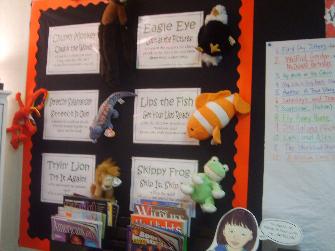My district is in full swing of implementing the Readers & Writers Workshop Model. I like the model as a reading teacher, but you have to remember there is no one program or model that reaches all students, a teacher does this by giving students what they need, when they need it. Sometimes that means steering off the roads, but being able to map where you are going still. Here is an example of some tips my principal emailed out today for the workshop model. These are good things to remember!
Tips for managing the workshop
Ø
Discuss what each component should look like
Secondary Example:
|
Components
|
Teacher
|
Students
|
|
Opening
|
· Introduce learning targets
· Build the “need to know” for the lesson
|
· Finish bell work
· Read learning targets or I can statements
|
|
Mini lesson
|
· Reading
· Writing
· Thinking aloud
· Modeling
|
· Turn & Talk with partner
· Listening
|
|
Work time
|
· Conferring
· Catch/Release
|
· Reading
· Thinking
· Responding
|
|
Debrief
|
· Select students to share
· Share what students did
|
· Turn & Talk
· Active Listening
· Learning from others
· Formative assessment
|
Ø
Take time to establish guidelines for
productive, independent group work.
Include students in this process, for they are more apt to follow
guidelines and goals they helped create.
Include expectations for:
o
what to do if they finish early
o
what to do if you are conferring and they have a question or if
they need to leave the room (i.e. go to the bathroom), what do to if they need
supplies
*
Ask students to suggest behavior
guidelines that will help groups discuss text, complete projects, and/or
confer. State guidelines in positive
sentences so they understand what they can and should do, rather than what they
shouldn’t do.
*Build students stamina to work through the entire work time.
Include catch and releases as you see students off task throughout the
time. Set goals for the amount of time
they will work before you pull them back together.
* Communicate how students will be assessed on the learning target
that day; clear expectations for what they will need to accomplish by the end
of the class-remind students of this as they begin their worktime.
* Routines and procedures may need to be revisited
periodically to ensure all students are productive in a workshop environment.


